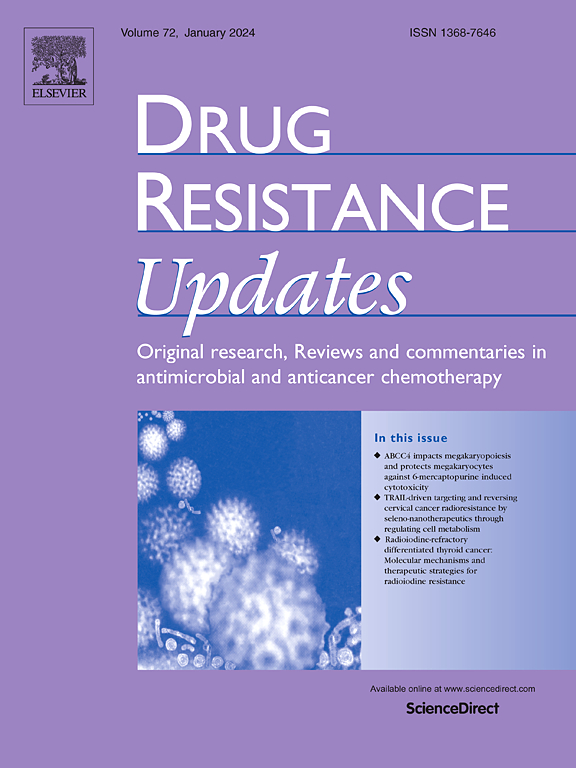HSA-templated synergistic platform boosts radiotherapy via enhanced radiosensitization and ferroptosis induction
IF 21.7
1区 医学
Q1 PHARMACOLOGY & PHARMACY
引用次数: 0
Abstract
Radiotherapy efficacy in cancer treatment is frequently compromised by tumor radioresistance, limited immune activation, and off-target toxicity. To address these challenges, we developed a multifunctional nanosystem (FPPF@HC), combining FePt-PEG-FA nanoparticles encapsulated in an HSA-CaP hybrid shell. This platform prolongs systemic circulation, effectively targets tumors via the enhanced permeability and retention effect, and facilitates active folate receptor-mediated uptake. In the acidic tumor microenvironment, the nanoparticles release FePt cores, triggering ferroptosis through Fe²⁺-mediated Fenton reactions, oxidative stress, lipid peroxidation, and subsequent tumor cell death. Concurrently, ferroptosis-induced immunogenic cell death enhances dendritic cell maturation and CD8⁺ effector T cell infiltration, remodeling the tumor immune microenvironment. In vitro and in vivo studies demonstrated significantly improved tumor suppression, radiosensitivity, and immune activation compared with radiotherapy alone. Comprehensive biosafety evaluations indicated minimal systemic toxicity. This nanosystem offers a promising strategy for overcoming radioresistance and improving clinical outcomes in cancer therapy.
hsa模板化的协同平台通过增强放射增敏和铁下垂诱导促进放疗
肿瘤的放射抵抗、有限的免疫激活和脱靶毒性经常影响放疗在癌症治疗中的效果。为了解决这些挑战,我们开发了一种多功能纳米系统(FPPF@HC),将FePt-PEG-FA纳米颗粒封装在HSA-CaP混合壳中。该平台延长体循环,通过增强渗透性和滞留效应有效靶向肿瘤,促进叶酸受体介导的活性摄取。在酸性肿瘤微环境中,纳米颗粒释放FePt核,通过Fe 2 +介导的Fenton反应、氧化应激、脂质过氧化和随后的肿瘤细胞死亡触发铁凋亡。同时,铁中毒诱导的免疫原性细胞死亡增强树突状细胞成熟和CD8 +效应T细胞浸润,重塑肿瘤免疫微环境。体外和体内研究表明,与单独放疗相比,显着改善肿瘤抑制,放射敏感性和免疫激活。综合生物安全性评价表明,其系统性毒性极小。这种纳米系统为克服放射耐药和改善癌症治疗的临床结果提供了一种很有前途的策略。
本文章由计算机程序翻译,如有差异,请以英文原文为准。
求助全文
约1分钟内获得全文
求助全文
来源期刊

Drug Resistance Updates
医学-药学
CiteScore
26.20
自引率
11.90%
发文量
32
审稿时长
29 days
期刊介绍:
Drug Resistance Updates serves as a platform for publishing original research, commentary, and expert reviews on significant advancements in drug resistance related to infectious diseases and cancer. It encompasses diverse disciplines such as molecular biology, biochemistry, cell biology, pharmacology, microbiology, preclinical therapeutics, oncology, and clinical medicine. The journal addresses both basic research and clinical aspects of drug resistance, providing insights into novel drugs and strategies to overcome resistance. Original research articles are welcomed, and review articles are authored by leaders in the field by invitation.
Articles are written by leaders in the field, in response to an invitation from the Editors, and are peer-reviewed prior to publication. Articles are clear, readable, and up-to-date, suitable for a multidisciplinary readership and include schematic diagrams and other illustrations conveying the major points of the article. The goal is to highlight recent areas of growth and put them in perspective.
*Expert reviews in clinical and basic drug resistance research in oncology and infectious disease
*Describes emerging technologies and therapies, particularly those that overcome drug resistance
*Emphasises common themes in microbial and cancer research
 求助内容:
求助内容: 应助结果提醒方式:
应助结果提醒方式:


